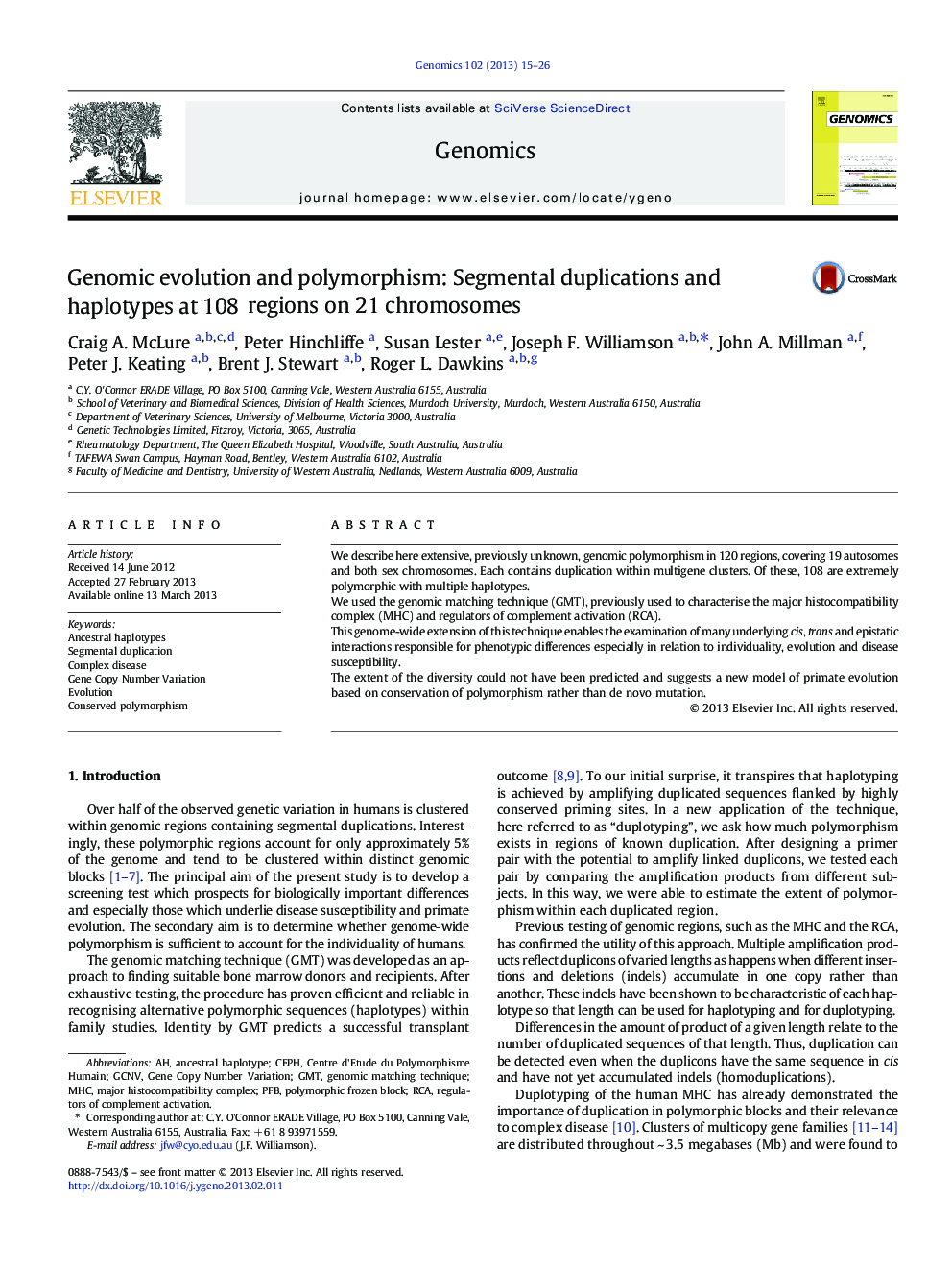| Article ID | Journal | Published Year | Pages | File Type |
|---|---|---|---|---|
| 5907917 | Genomics | 2013 | 12 Pages |
â¢A whole genome approach identifying polymorphic blocks by one of their key featuresâ¢The vertebrate genome contains quanta of variation or polymorphic frozen blocks.â¢Evidence suggests a new model for primate evolution.â¢Model based on conservation of polymorphism rather than de novo mutationâ¢Uniqueness is a function of random mixing of haplotypes not random mutation.
We describe here extensive, previously unknown, genomic polymorphism in 120 regions, covering 19 autosomes and both sex chromosomes. Each contains duplication within multigene clusters. Of these, 108 are extremely polymorphic with multiple haplotypes.We used the genomic matching technique (GMT), previously used to characterise the major histocompatibility complex (MHC) and regulators of complement activation (RCA).This genome-wide extension of this technique enables the examination of many underlying cis, trans and epistatic interactions responsible for phenotypic differences especially in relation to individuality, evolution and disease susceptibility.The extent of the diversity could not have been predicted and suggests a new model of primate evolution based on conservation of polymorphism rather than de novo mutation.
